It is enough to refer to any catalog offering septic tanks for summer cottages or country house, and one has to face an almost unsolvable problem of choice. Indeed, along with the recognized leaders in this field, there are enterprises that have just entered the market or manufacturers that have achieved success in other types of household products, but decided to develop a new direction in production. That is why we want to offer you an overview of the main brands of septic tanks that are successfully used in summer cottages with seasonal residence and in houses with year-round use of sewage.
Non-volatile septic tanks
Models that work without electricity and are not “tied” to the presence of power networks are primarily suitable for small country houses. In gardening partnerships and in remote areas, there is a risk of power outages for quite a long period, so you should decide in advance on the equipment for sewage. Of course, users have a logical question, do they need a septic tank in the country, if you can simply equip cesspool. Here we will not convince the owners of suburban areas, but simply recall the aesthetics, basic amenities and sanitary requirements. So, TOP5 non-volatile septic tanks.
1. Tank
Septic Tank is made of high-strength plastic with a thickness of 10 mm to 17 mm with stiffeners. The design provides for the resistance of the model to increased loads that occur with soil pressure in winter and summer. The estimated service life of the product is at least 50 years, subject to the operating conditions. A simple septic tank works on the principle of pre-cleaning Wastewater by settling and subsequent biological decomposition of the material by a high-performance biofilter. The infiltrator is responsible for distributing purified water into the soil.
The special shape of the body prevents the septic tank from being squeezed out by the soil, and the possibility of equipping the equipment with a high neck allows you to place models at the required depth. Versatile design, consisting of block modules, allows you to collect any volume of a septic tank, and overflow pipes serve as connections.
The operating conditions of the septic tank provide for its periodic cleaning of accumulated solid sediment. At correct use equipment and the use of bacterial colonies, the tank can be cleaned every 4-5 years. However, it is recommended to do this at least once a year. With the periodic use of a septic tank, for the winter period, when sewerage is not supposed to be cleaned, about a third of the water is removed from the tank. We also suggest that you familiarize yourself with reviews of Tank septic tanks.
2. Triton
Three chambers are responsible for the implementation of the process of removing various suspensions from polluted water, anaerobic decomposition of biological material and supplying treated effluents to the filtration site. The Triton septic tank is available in several versions, which makes it possible to choose between models with a volume of 2 to 40 m3.
Once a year, or in case of intensive use twice a year, the container must be cleaned of accumulated solids. The service life of a plastic container is approximately 50 years. When installing equipment, it is required to provide an "anchor", concrete slab or monolithic concrete surface, which will ensure reliable retention of the septic tank at a given level.
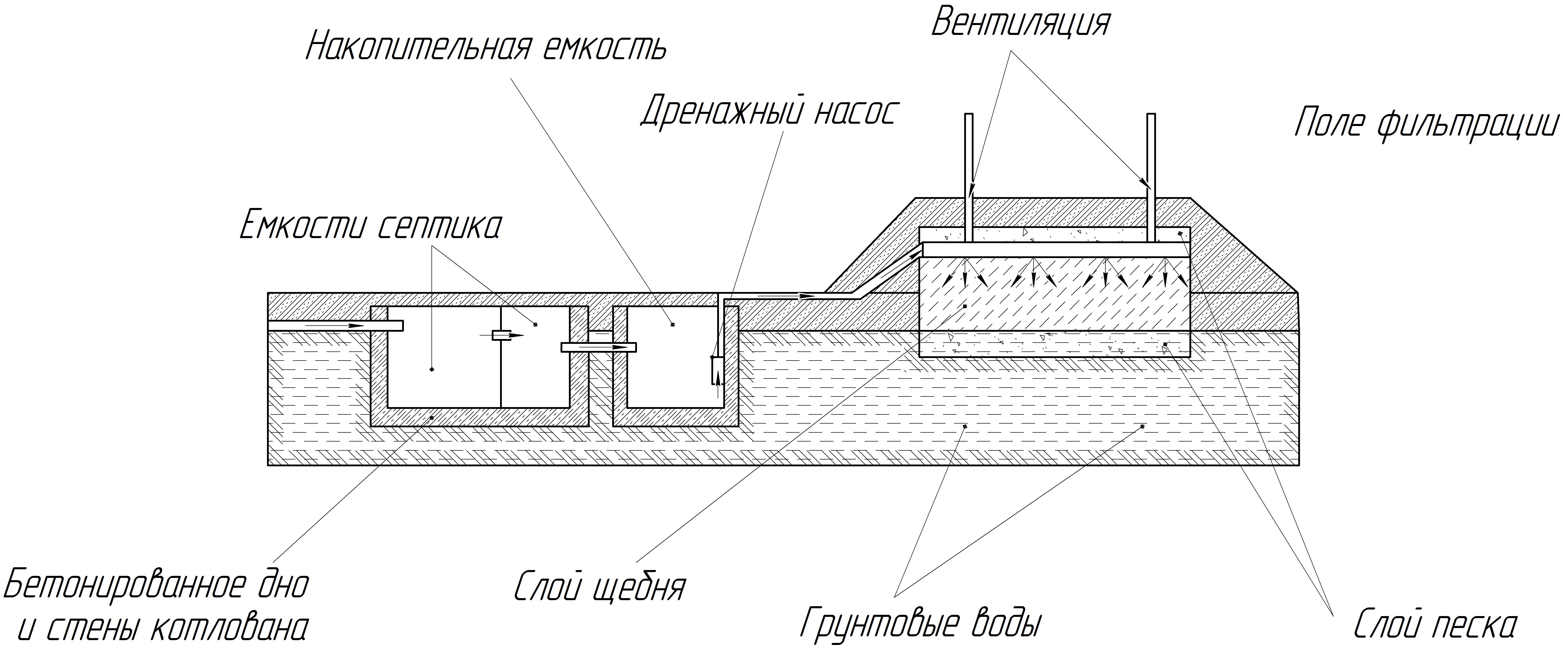
For small country houses and baths, Triton-mini models are suitable, a compact septic tank for the summer, designed to receive small volume wastewater. .
3. BARS-Bio
The BARS-Bio septic tank is suitable for both seasonal and permanent residence in country house, where it is possible to create a filtration field or any other type of soil post-treatment of water removed from the tank. simple system The septic tank is based on the passage of contaminated water through three chambers and two biofilters. Biofilters, due to their design, do not require maintenance. Initially, solid suspensions settle in the first of the three compartments of the tank, and then, in the other two chambers, gradual processes of anaerobic decomposition of organic matter occur due to the development of anaerobic colonies on a significant surface of a special load.
The advantages of the BARS-Bio septic tank are in the number of chambers, which increases the efficiency of wastewater treatment. As a result, there is no need to reconstruct the filtration fields, which remain clean for a long time, and, therefore, there are no additional costs for the operation of the septic tank. The tightness of the durable plastic housing prevents the ingress of contaminated wastewater directly into the soil.
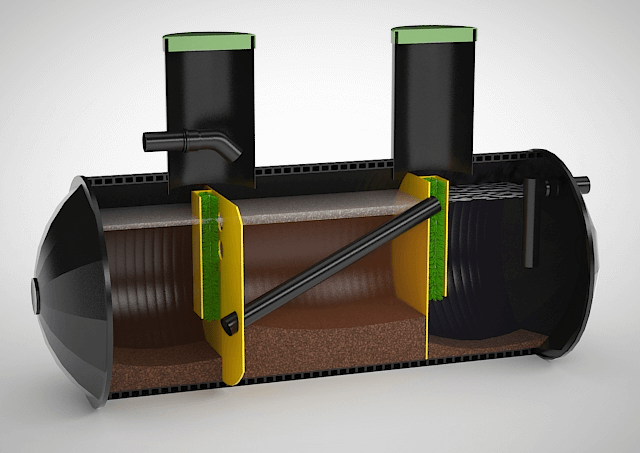
Distinctive features of BARS-Bio septic tank models are:
- Heavy duty 25mm plastic body and spherical ends. All BARS models have a powerful body made of spiral HDPE pipes with a guaranteed wall thickness of 25 mm. The material is resistant to low and high temperatures which allows it to be used in all climatic conditions.
- One-piece neck of arbitrary height provides 100% protection against ingress of groundwater and rainwater. The neck height of the device can be selected in increments of 10 cm.
- Three chambers and two biofilters with efficient overflow system. This gives a high degree of cleaning, which significantly extends the life of the soil aftertreatment.
The service life declared by the manufacturer is at least 50 years.
The performance of various models ranges from 700 liters to 1500 liters per day. Accordingly, the price of a septic tank also depends on this value.
Volatile septic tanks
Septic tanks that require a constant connection to electricity operate on the principle of forced oxygen supply to bacteria, i.e. aerobic wastewater treatment. Such a septic tank is a real deep cleaning station, which allows you to bring fecal effluents to a level where it can be drained into water bodies, storm sewer and ditches without the risk of disturbing the ecological balance. Among domestic septic tanks, five of the most common models stand out.
4. Tver
The septic tank Tver belongs to the category of local treatment facilities in which wastewater treatment is carried out in a complex manner. The device involves several fundamentally different technologies- combined in one system, they provide excellent results when using a small usable area of \u200b\u200bthe site. Let's make a reservation right away that this solution is energy-dependent and is more adapted for use in homes with permanent residence. But it is also suitable for giving, subject to simple rules conservation.
The equipment includes a durable multi-chamber plastic container. The first chamber plays the role of a sump holding the lion's share of sparingly soluble inclusions. Some of them sink to the bottom, the rest float on the surface. Anaerobic decomposition processes take place here, which continue in the second chamber on biofilters. This is followed by a chamber-aerotank, in which the water is saturated with oxygen from the air. This activates the processes of aerobic water purification by the corresponding microorganisms. The liquid continues to be cleaned in the next several chambers, into which it flows by gravity. One of them contains a load of limestone, which is associated with harmful decomposition products - phosphorus and nitrogen compounds. The addition of chlorine-containing reagents at the last stages can significantly increase the efficiency of water disinfection.
Installation of models is possible on any type of soil, even if the dacha is located on former peat mines, which are characterized by an increased aggressive environment. High-strength plastic is not exposed to corrosive processes, and an additional "anchor" pre-installed in the pit will not allow the tank to "float".
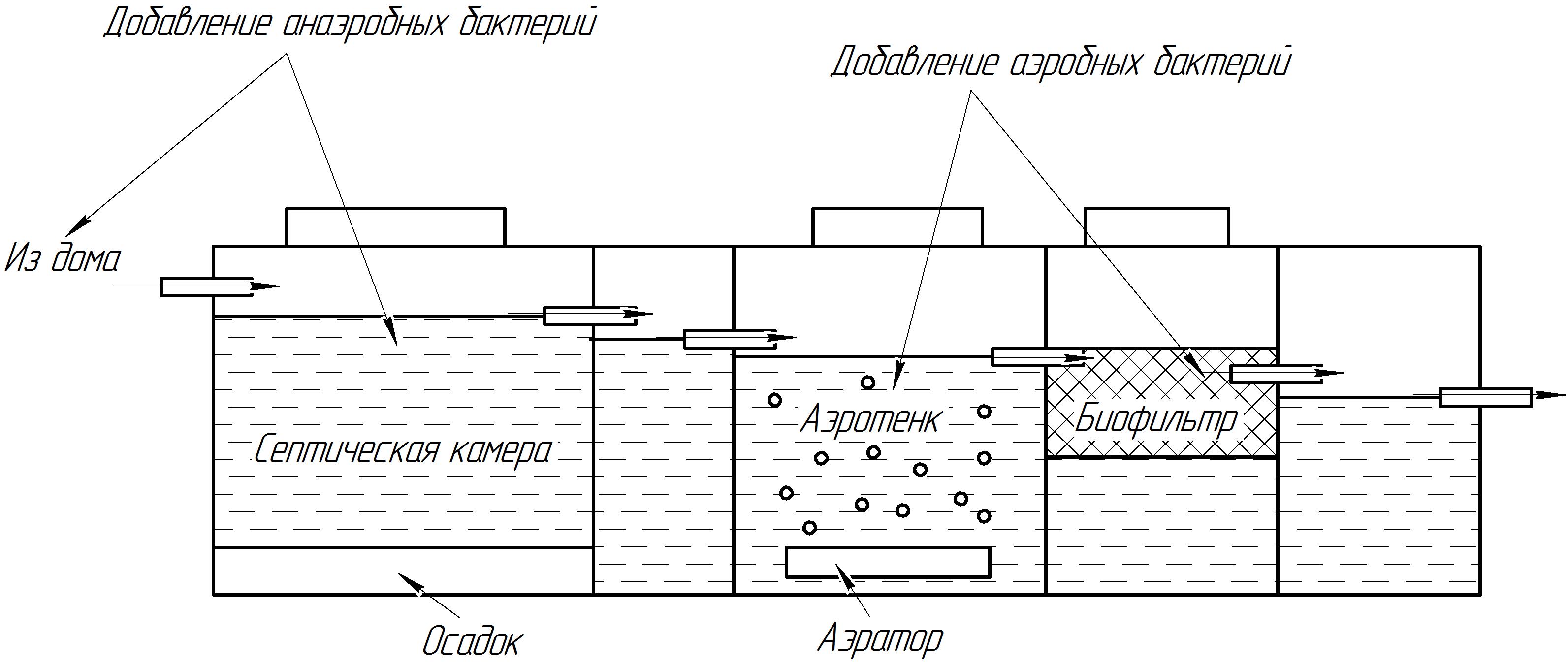
A distinctive feature of the septic tank is the possible reception of a large volume of waste water. If you need to drain the bath, then the septic tank will cope without deteriorating the quality of the outlet water and without the risk of untreated sewage being released. .
5. Leader
Leader septic tanks use electricity to remove sediment from settling tanks (airlift) and to run an aerator, which saturates water with oxygen for the development of aerobic microorganisms that eat organic matter. This is a volatile solution. Due to the presence of as many as six chambers and an integrated approach to wastewater treatment, the process does not require the use of special biological additives, and the system itself is resistant to temporary overloads due to pollution of sewage.
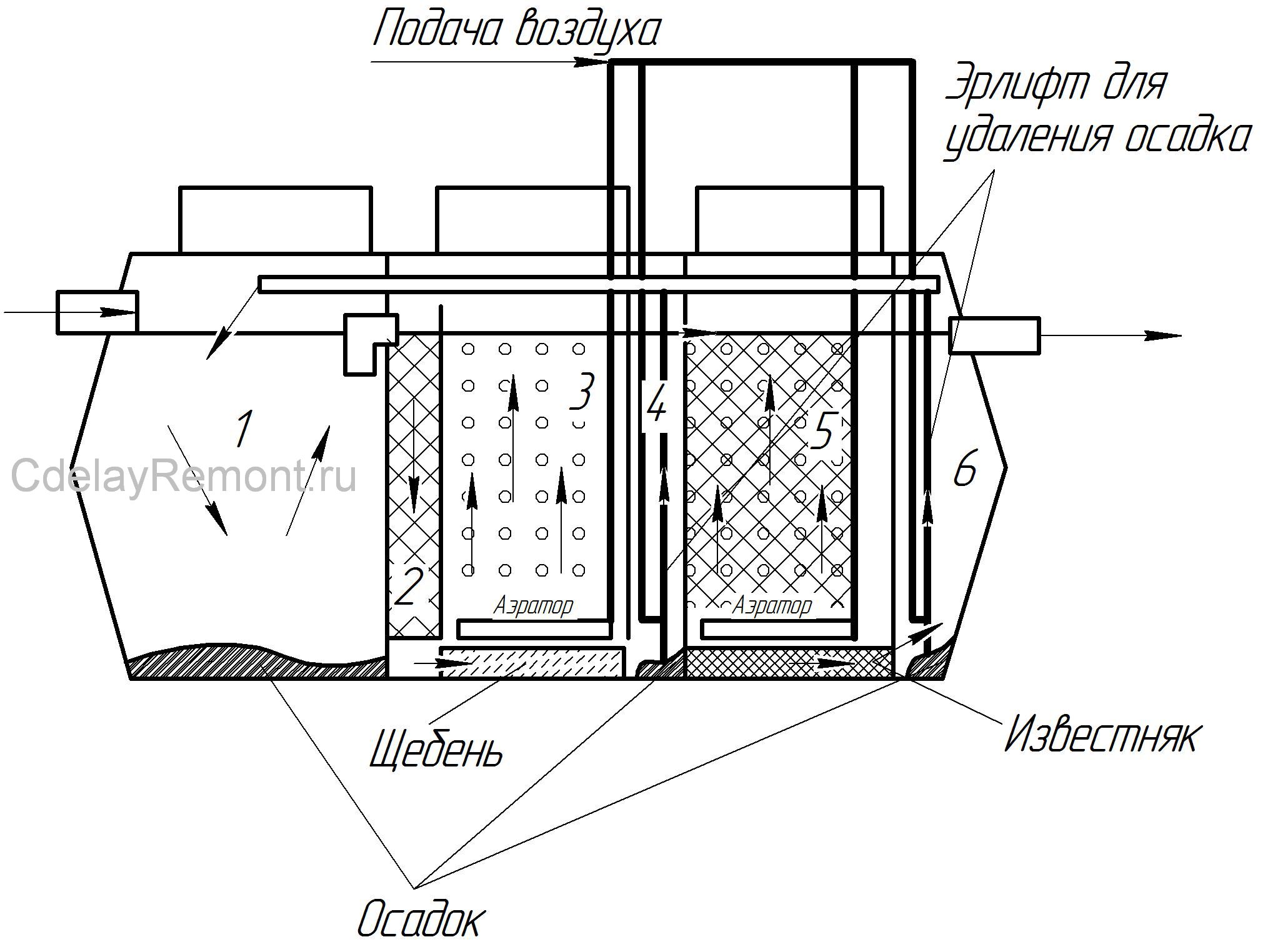
Wastewater treatment is carried out in such a way that it can be drained to a place convenient for you: a reservoir, ditches or a drain well. No violations of the environment and standards for the discharge of pollutants, full consistency with the surrounding nature.
Local wastewater treatment is carried out according to the principle of passing through all stages of the tank with periodic pumping of the accumulated activated sludge. The first chamber is intended for the mechanical stage of purification - sedimentation of suspended particles and primary water clarification. The manufacturer indicates that the efficiency of the first chamber reaches the deposition of 2/3 of mineral impurities. The second stage is a bioreactor, where anaerobic bacteria initiate fermentation, a process that converts substances that are difficult to oxidize into ones that are easier to oxidize. Bacteria develop on a special polymer line that mimics algae. In the third, fourth and fifth blocks of the septic tank, wastewater is purified by aerobic bacteria, for which suitable conditions for life are created using two aerotanks with aerators. Bacteria multiply on porous material, form whole colonies, turning into the so-called activated sludge. And the result of this victorious battle with sewerage serves as the last stage of the septic tank. It is here that the neutralization of phosphates in the alkaline environment of dissolved limestone is realized.
6. Poplar
The design of this septic tank ensures the operation of the selected model in conditions from -30 to +40 0С.
Poplar works on the principle of the passage of waste sewage through four compartments, two of which are equipped with aerators. The constant supply of oxygen to the contents of the septic tank has a beneficial effect on the development of bacteria that are "responsible" for the decomposition of the biomaterial. The oxygen pressure is provided by compressors, and the fluid circulation between the compartments is carried out by airlifts.
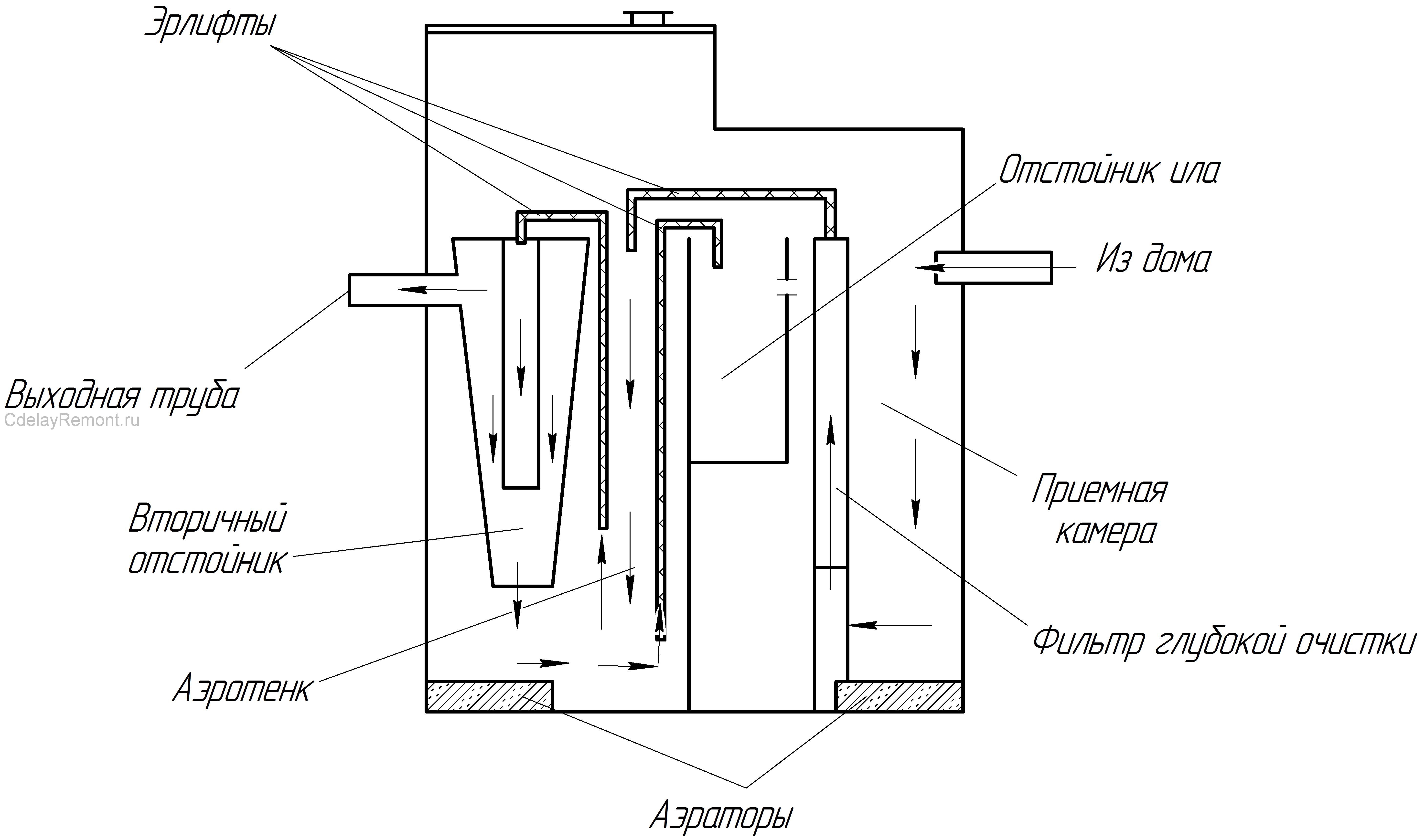
After the decomposition of human waste by bacteria, the wastewater enters the sump, where activated sludge is deposited and the liquid is sent through the filter to the discharge system. All pumps are located in a sealed compartment, moisture ingress to the contacts is excluded and, accordingly, a high degree of equipment protection is ensured.
The polymers from which the body of the septic tank is made are not subject to corrosion and the estimated service life of the septic tank is about 50 years. Deposits are removed using a cesspool machine or independently, the design provides for any of the options. .
7. Topas
cleaning sewer water in the septic tank, Topas passes in several directions. This is the decomposition of organic materials and a qualitative decrease in the salinity of wastewater, cleaning from mechanical impurities. The principle of operation of the septic tank is not something innovative, but, nevertheless, it provides 98% purified water at the outlet, which can be used as irrigation.
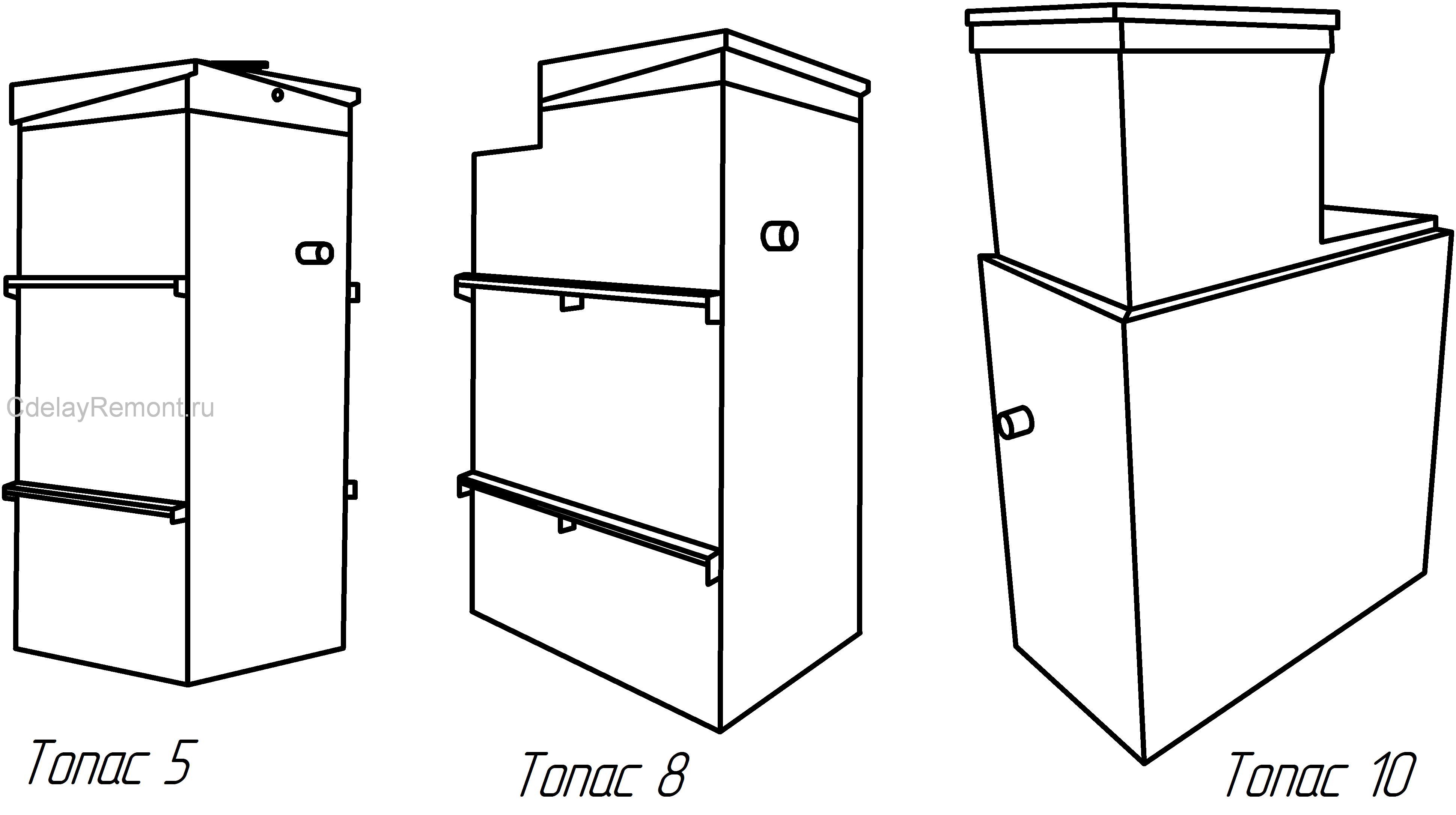
The first stage of sewage cleaning is implemented in the receiving chamber, where mechanical impurities are deposited. Next, the airlift pumps partially purified water into the aerotank to destroy organic compounds through the vital activity of bacteria, the colonies of which are in activated sludge. Silt suspensions coming with water of deeper purification are deposited in the next compartment. Already from there, completely purified water is removed from the system, and the sludge is returned for further use.
8. Ecopan
The Ecopan septic tank of the T series was specially designed for use on problematic heaving soils and with high content clay. The destructive effect of the soil on the container is compensated by a two-layer structure with many internal partitions between the surface polymer layers. For light soils, Ecopan of the L series is used, in which the resistance to mechanical damage is ensured by a wall thickness of up to 8 mm.
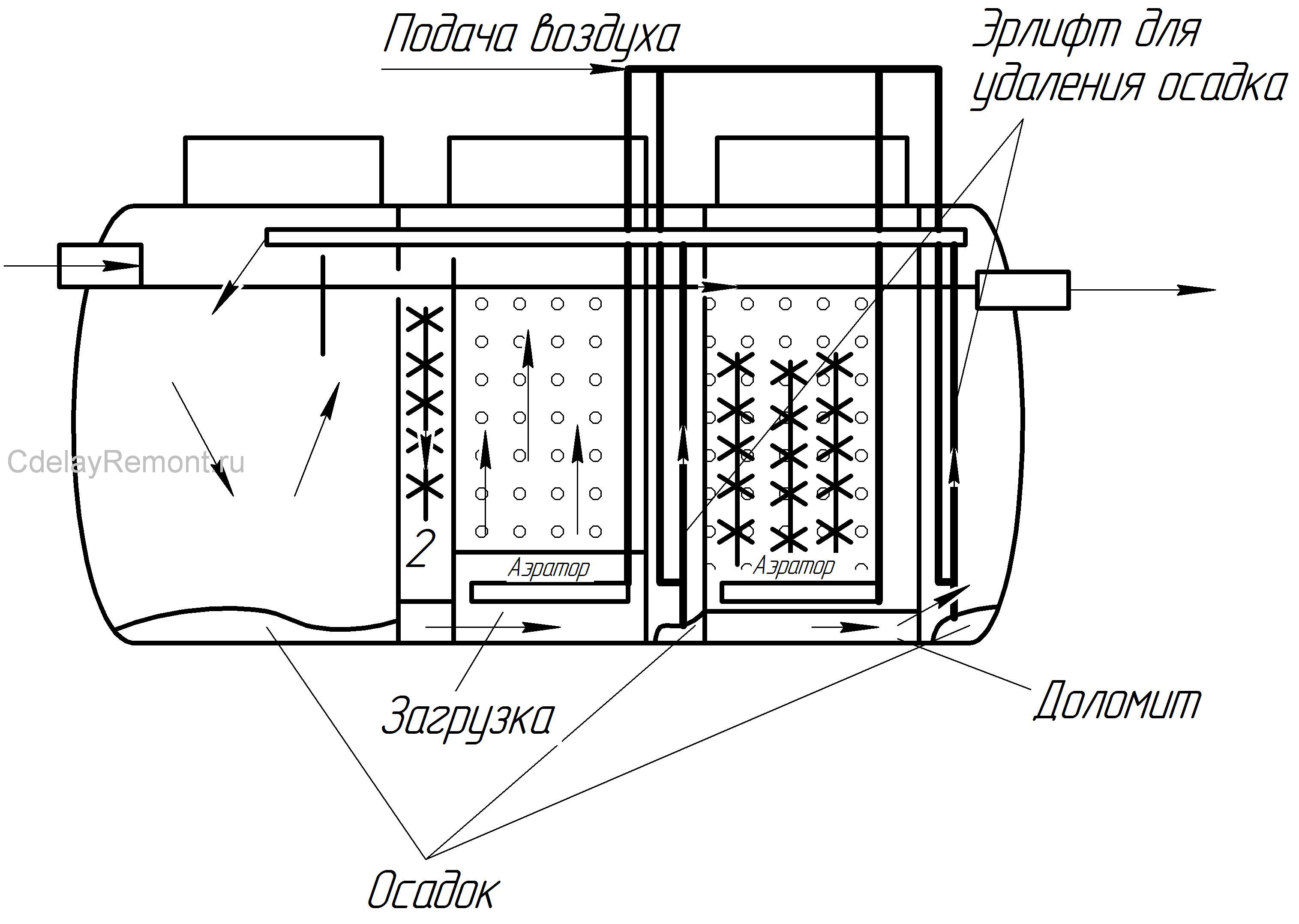
Six sections of the septic tank step by step process sewer cleaning. In the first compartment, light and heavy suspensions are deposited, which are pumped out as they accumulate through the hatch provided by the manufacturers. Next, the aerobic process takes place inside the next compartment. Ruff loading ensures the rapid development of bacteria, which, in turn, decompose organic compounds. Additionally, in the next chamber (aerotank), oxygen is supplied by a compressor to deepen the process of decomposition and oxidation.
Calming the mixture and sedimentation of suspensions takes place in the next compartment, from where the sediment is pumped to the first chamber for further removal. The penultimate compartment is used to treat wastewater to the required values, where colonies of organisms on a brush load bring the process of biomaterial decomposition, and limestone provides a normal pH of the environment. From the last chamber, purified water is discharged from the system by means of a pump or by gravity.
9. Unilos
The combination of two types of treatment (biological and mechanical) allows you to remove contaminants from sewage and save environmental safety suburban area. Unilos continues the series of "topas-like" septic tanks, which implement the principle of water passing through several compartments. Firstly, it is the removal of mechanical impurities that settle to the bottom and are removed as they accumulate. Secondly, biological treatment using aerobic technology. In the chamber, organic contaminants from the liquid phase pass into a solid insoluble form, which is convenient for their removal from the water through filters. On last step there is a final sedimentation of suspensions and the withdrawal of 95-98% pure water.
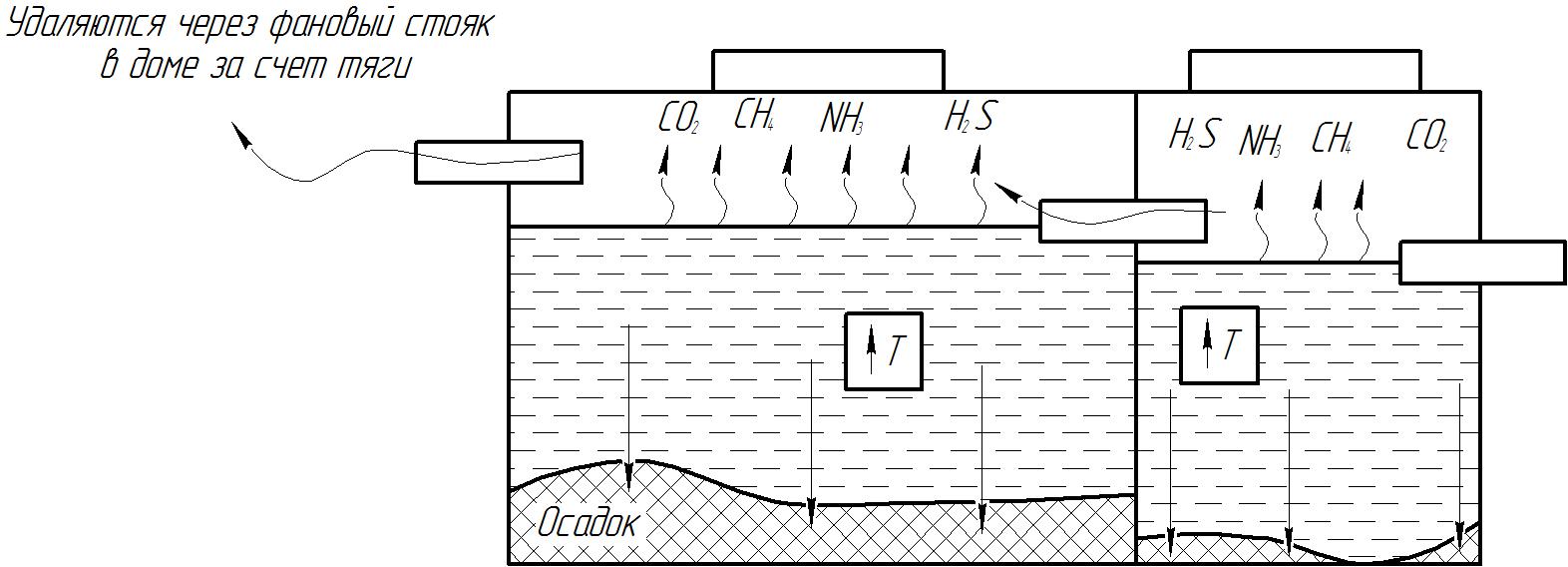
The operation of the equipment provides for interruptions in the supply of electricity. Estimated service life is more than 50 years. The strength of the case is ensured by the manufacture of walls made of polypropylene 20 mm thick. More details can be found in .
10. Yubas
The operation of the installation is subject to a rather complex algorithm, which, nevertheless, is implemented with maximum technical simplicity. The repetition of the same processes allows to achieve the maximum degree of water purification from all types of organic pollution.
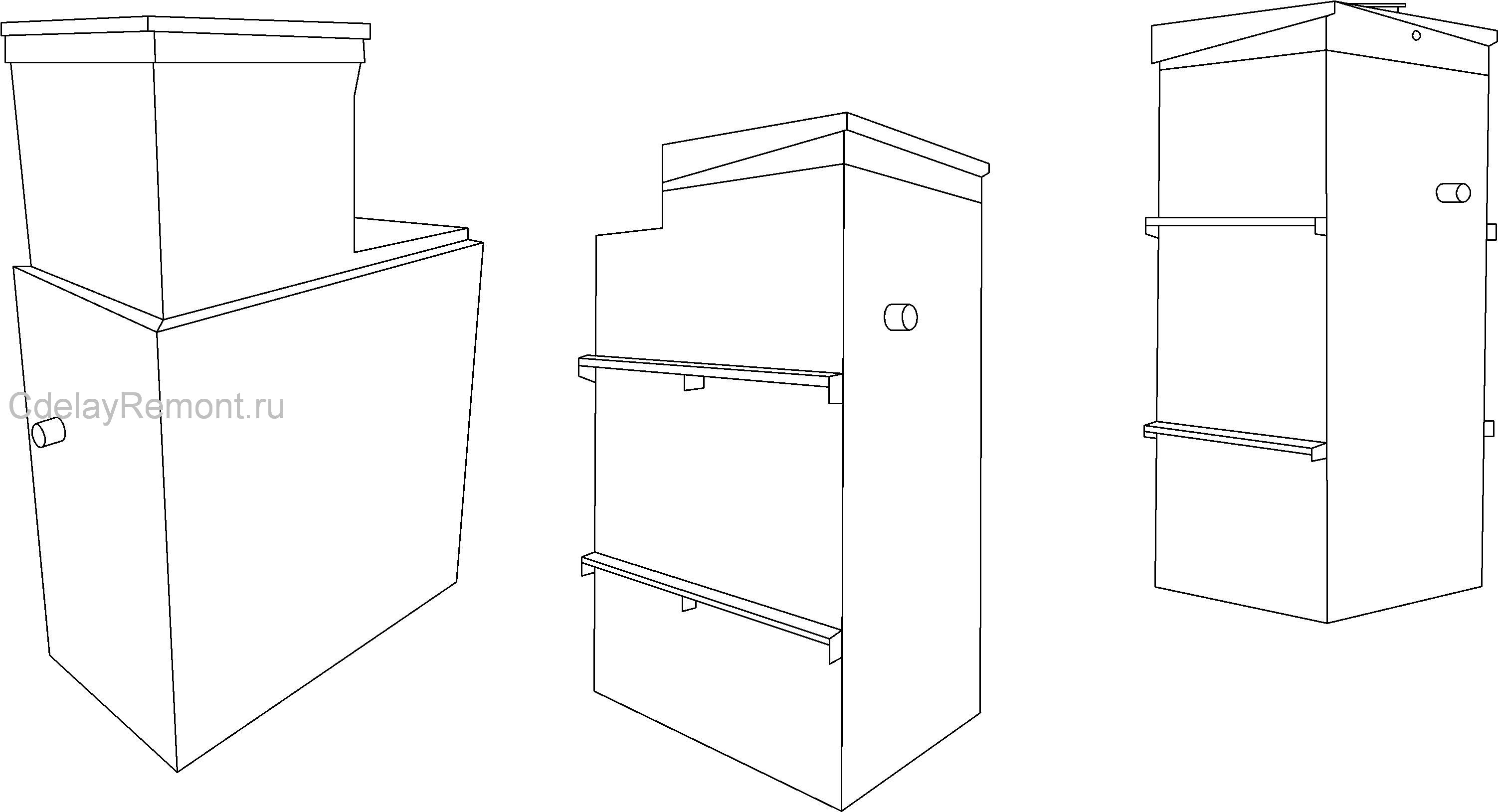
The monolithic body of the septic tank does not allow sewage to penetrate directly into the ground, and its operation allows interruptions in the use of equipment for up to 3 months. An innovative solution was the use of processing equipment control processors. It is enough for the owners of a septic tank to carry out timely cleaning of the chamber for settling mechanical suspensions, and the rest of the work is done by automation.
11. BARS-Aero
deep station biological treatment BARS-Aero was developed jointly with leading employees of the Water Supply and Sanitation Department of the Moscow State University of Civil Engineering.
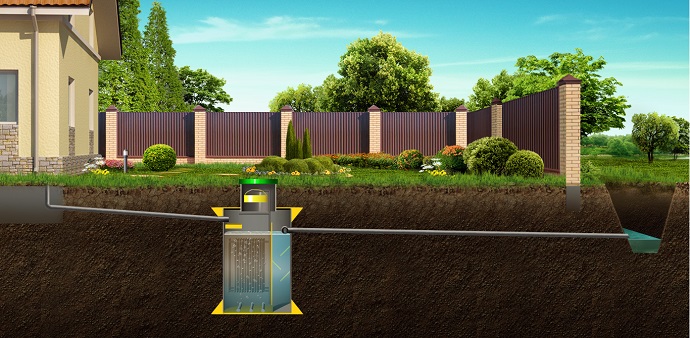
SBO "BARS-Aero" provides:
- High degree of wastewater treatment (98%).
- Lack of odor in treated wastewater.
- Basic maintenance: open the lid - take out the sludge container - shake out the sludge
- Does not require the call of a cesspool machine.
- Resistant to volley discharges and the content of detergents in drains.
- Stability of work at blackout and the minimum time of an output in an operating mode.
- Low power consumption.
Distinctive features of the BARS-Aero SBO models are:
- Housing made of HDPE spiral pipe with a guaranteed thickness of 25mm. The material of the station is resistant to low and high temperatures, which allows it to be operated in any climatic conditions.
- Plastic pipes instead of hoses. There are absolutely no hoses and metal clamps in the design, only plastic pipes. Hoses are prone to kinking at bends, which subsequently leads to a stop in the operation of the station.
- The compressor is installed outside the station, in the house or in a special welded compartment outside the neck. does not allow moisture inside the station to spoil it.
- Resistant to draining cleaning agents. Due to the installation of an artificial carrier of microflora, the population of microorganisms that purify water increases significantly and the impact of chemistry on the operation of the station becomes minimal.
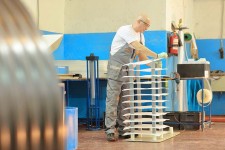
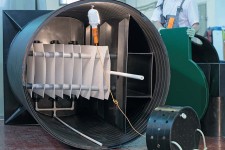
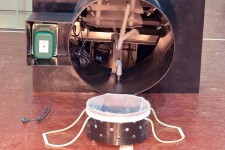
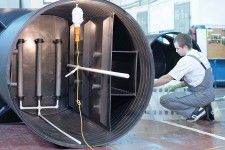
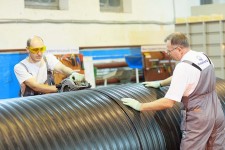
The performance of various models ranges from 600 liters to 1500 liters per day.
Choose Wisely
All of these models have adequately proven themselves in the market, have a well-thought-out design and a sufficient degree of wastewater treatment. Therefore, the choice of a septic tank depends only on the required volume and the level of its autonomy. Be sure to control the installation - this will allow you to avoid most of the problems that arise with septic tanks during their operation.
Due to the widespread country houses and dachas the issue of arrangement autonomous system sewerage has become more relevant than ever. is a complex of many systems designed for waste disposal. Installation of a septic tank in a turnkey private house is our specialty. We carry out all work manually, it requires a little more time, but the finished result is better. We carry out in the house qualitatively and in strictly agreed terms in advance.
We install septic tanks in private houses and cottages from reinforced concrete rings
Modern septic tanks for a country house are various types- plastic and concrete. Our specialists specialize in the installation of concrete septic tanks. Unlike plastic, concrete is a much stronger and more durable material. from concrete is required for arranging the filter sewer system. Reinforced concrete is well resistant to adverse weather conditions, ground movement, and also withstand significant physical stress. Due to this, the service life of reinforced concrete wells is 50-100 years or more.
For the equipment of an autonomous sewage system, the best option is to buy a septic tank for a private house, because treatment facilities of this type have very good performance characteristics. Wastewater treatment systems working with septic tanks perform their functions very efficiently, as evidenced not only specifications, but also numerous. The principle of operation of septic tanks is quite simple, it is based on the technology of settling wastewater. Appearance treatment facilities of this type can be seen by viewing numerous.
Modern septic tanks for a private house: price with installation
Currently, most modern country houses are equipped with autonomous sewage systems with septic tanks. This is not surprising, because treatment facilities of this type are not only very practical, but durable and affordable.
A septic tank for a private house is an indispensable condition for a comfortable stay, since only such a completely autonomous purification system allows you to effectively remove wastewater where there is no possibility of connecting to central sewerage. Having installed a septic tank for a private house, the price of which is quite reasonable, the owners forget about outdoor toilet and buckets of water, like a terrible dream. Care and maintenance of the local treatment plant does not require much effort, and the cost of the installation pays off very quickly.
How to choose a septic tank for a private house.
Each septic tank for a private house must effectively perform the most important function - to make wastewater safe for residents of the house and the surrounding area. At the same time, such an installation also helps to significantly save on utility bills.
Before choosing the most suitable and efficient septic tank for a private house, it is necessary to take into account some factors:
The number of people living in the house.
The volume of wastewater entering the system and the number of sources requiring maintenance (sinks, toilets, showers, bathtubs, washing machines, dishwashers).
The material from which a septic tank is made for a private house.
Features of the soil on the site and the terrain.
The presence of a reservoir nearby, where you can remove excess water.
septic performance.
If you choose a modern high-performance septic tank for a private house, then the best option will concrete look cleaning station. Such a septic tank is not subject to temperature changes and is resistant to ground pressure. concrete septic tank for a private house, you can do it yourself or by contacting a professional company with experienced specialists. It is a construction of concrete rings, which are interconnected by reinforcement. Such a system is suitable for organizing storage or settling local sewage, and will good choice for a house where people constantly live.
An excellent option would be to buy a septic tank for a private house made of plastic. These are ready-made structures in the form of plastic containers, which are great for any type of soil, have long term service and low maintenance. Treatment plants provide a deeper degree of cleaning than concrete structures, but the price of a septic tank for a private house of this type will be higher.
To date, completely autonomous septic tank for a private house is the most popular option. It uses forced multi-stage filtration, which ultimately purifies water up to 95-98%. The combined cleaning method (biological and mechanical) provides a guarantee of safety for the environment and the health of people living in the house.
It is best to buy a septic tank for a private house from a company that officially cooperates with the manufacturer and offers a full range of services for installing a cleaning station, launching and servicing. A professional company gives a guarantee for all work performed and installs equipment in accordance with all the rules of SNiP and sanitary epidemiology.
Pumping septic tank for a private house.
If you decide to install a pumping septic tank for a private house, then be prepared for the fact that it needs to be cleaned regularly. You can do this yourself or with the help of specialized companies.
1. Manual cleaning requires a lot of time and effort, and it will be necessary to solve the problem of waste disposal.
2. Mechanical pumping involves the use of special powerful pumps and equipment for waste disposal. A septic tank for a private house also needs a complete cleaning of the pipeline, dilution of activated sludge, and disinfection. All these services are not cheap, but they compensate for the time and nerves spent and guarantee the high quality of system cleansing.
3. An automatic septic tank for a private house, the price of which is higher than the cost of a concrete one, can be equipped with a pumping function. It has filters that clean themselves several times a month. However, here it is necessary to monitor the number of bacteria, since they are washed away with the liquid into the sewer.
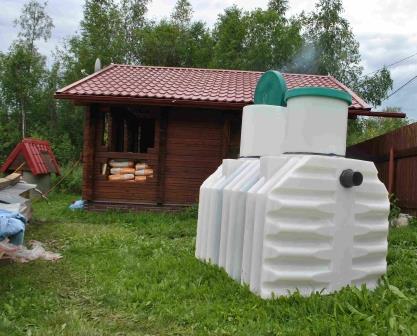 To the question - which septic tank is better for a private house, there is no universal answer. For each individual case, you need to choose best option models and take into account the number of residents, the volume of wastewater, the characteristics of the soil and climate in the area. Domestic manufacturers of septic tanks offer a wide range of models that differ in performance, design and cost. Therefore, before you buy a septic tank for a private house, you should consult with experienced professionals.
To the question - which septic tank is better for a private house, there is no universal answer. For each individual case, you need to choose best option models and take into account the number of residents, the volume of wastewater, the characteristics of the soil and climate in the area. Domestic manufacturers of septic tanks offer a wide range of models that differ in performance, design and cost. Therefore, before you buy a septic tank for a private house, you should consult with experienced professionals.
If you are looking for an effective septic tank for a private house, the price of which is affordable, then here is a ranking of the best options:
Cleaning plant Poplar.
Cleaning system Topas.
Autonomous station Termit.
Septic tank for a private house Ecoline.
The list goes on because Russian manufacturers regularly improve products and offer new high-quality products to the market.
Installation of a septic tank for a private house.
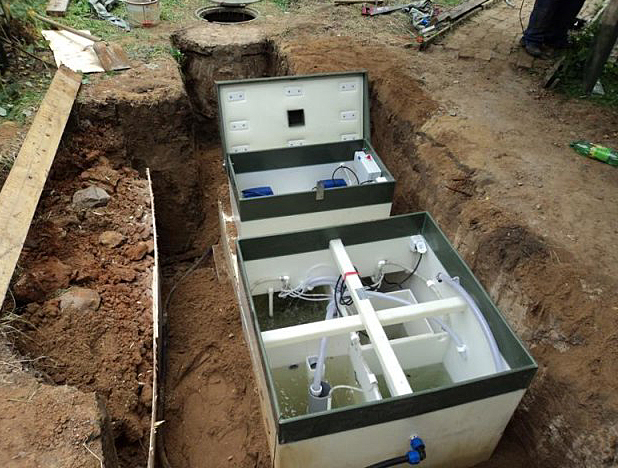 A septic tank for a private house should be located no closer than 5 meters from a residential building. At the same time, there must be at least 30 meters to the source of drinking water. When installing a septic tank for a private house, the price of which is affordable, it is worth remembering that the farther it is from the house, the more sewer pipes and the higher the final cost of the work. To install a septic tank for a private house, you need special tools and equipment, sand and cement, pipe insulation. The process itself consists of 4 main steps:
A septic tank for a private house should be located no closer than 5 meters from a residential building. At the same time, there must be at least 30 meters to the source of drinking water. When installing a septic tank for a private house, the price of which is affordable, it is worth remembering that the farther it is from the house, the more sewer pipes and the higher the final cost of the work. To install a septic tank for a private house, you need special tools and equipment, sand and cement, pipe insulation. The process itself consists of 4 main steps:
1. A pit breaks out under the septic tank and ditches for the pipeline.
2. The septic tank is placed in the pit with the help of technology.
3. The pipeline is mounted and connected with a slope of 1-2 cm per 1 running meter pipes.
4. With a mixture of sand and cement 5: 1, the entire structure is covered and compacted.
Thus, you can install a septic tank for a private house yourself, but it is better to entrust this hard work professionals to ensure you get a perfectly functioning wastewater treatment system.








